Deuteronomy 11:26 – “Behold, I set before you this day a blessing and a curse.” This biblical passage has been used countless times to describe the global economic structure in place since 1944. As World War II raged and Britain suffered significant financial stress, the allied forces signed the Bretton Woods Agreement. As part of the pact, the US dollar would replace the British pound as the world’s reserve currency.
Since then, many of the original commitments have gone away. However, friends and foes of the US remain heavily dependent on the US dollar as its reserve currency. With it, they accept the blessings and curses that come with it. The unwritten US dollar reserve pact is and always has been unsustainable. Nevertheless, every US President since 1944 has fully supported it. Donald Trump may no longer be willing to pass the buck as his abrupt economic and foreign policy reversals signal economic revolution.
This article’s conjecture is based on speeches from Trump and his administration, as well as economic policy actions. We do not think that Trump truly wants to end the reign of the dollar as the global reserve currency. But, as we bullet below, he’s trying to change some of the key remnants of the unwritten Bretton Woods agreement:
- End or sharply reduce trade imbalances
- Greatly limit military assistance and make countries pay for military support
- Reduce the debt burden
- Onshore manufacturing
The current tariff situation is incredibly complex and fluid, with immense long-term ramifications. Thus, this article will likely be the first of many to convey how changes to long-standing economic policy may impact the economy and markets. Stay tuned!
Before continuing, consider the following paragraphs from a speech on April 7, 2025, by the Council of Economic Advisers (CEA) Chairman Steve Miran.
Today I’d like to discuss the United States’ provision of what economists call “global public goods,” for the entire world. First, the United States provides a security umbrella which has created the greatest era of peace mankind has ever known. Second, the U.S. provides the dollar and Treasury securities, reserve assets which make possible the global trading and financial system which has supported the greatest era of prosperity mankind has ever known.
Both of these are costly to us to provide. On the defense side, our men and women in uniform take heroic risks to make our nation and the world safer, preserving our liberties generation after generation. And we tax hardworking Americans mightily to finance global security. On the financial side, the reserve function of the dollar has caused persistent currency distortions and contributed, along with other countries’ unfair barriers to trade, to unsustainable trade deficits. These trade deficits have decimated our manufacturing sector and many working-class families and their communities, to facilitate non-Americans trading with each other.
Triffin’s Paradox
We have written several articles on the dollar’s status as the global reserve currency and how it impacts the US and global economies. Because this topic is essential to understanding the current tariff situation, we share a few paragraphs from our article, Our Currency, The World’s Problem Part 1.
In 1960, 11 years before Nixon’s suspension of gold convertibility and the effective demise of the Bretton Woods Agreement, Robert Tiffin foresaw this inevitable problem in his book Gold and the Dollar Crisis: The Future of Convertibility. According to his logic, the privilege of becoming the world’s reserve currency would eventually carry a heavy penalty for the U.S.
At the time, few paid attention to Triffin’s thesis. However, he was invited to a congressional hearing of the Joint Economic Committee in December of the same year.
What he described in his book and Congressional testimony became known as Triffin’s Paradox. Events have played out primarily as he envisioned. Essentially, he argued the reserve status forces a good percentage of global trade to occur in U.S. dollars. For trade and global economies to grow under such a system, the U.S. must supply the world with U.S. dollars.
To supply the world with dollars, the United States must consistently run a trade deficit. Running persistent deficits, the United States would become a debtor nation.
A Circular Unsustainable Scheme
Foreign nations require US dollars for trade with the US and to transact with most other countries. Thus, they must hold dollars in reserve and frequently lend and invest those dollar reserves in the US financial markets. Foreign nations and corporations also borrow US dollars to boost their dollar liquidity. The need, or requirement, to hold dollars tends to bolster the dollar’s value over other currencies. Consequently, US exports become less competitive, and imports become more attractive. This fosters a growing trade imbalance, perpetuated as foreign nations lend dollars back to the US, allowing for debt-driven consumption of imported goods.
As the US and global economies have grown, US trade deficits and outstanding debts have increased. Thus, our reliance on more debt has increased, and with it, there is a need for lower interest rates to service it. The problem is self-reinforcing. Furthermore, the US manufacturing base has diminished throughout the process as cheaper imports are favored.
Consider the bullet points below and their accompanying graphs.
- The ratio of US Treasury debt to GDP has grown substantially.
- The foreign trade deficit has grown 25x over the last 30 years.
- The role of manufacturing in the US economy continues to erode.
- According to US Treasury TIC data, foreigners have lent us $26 trillion in US debt and equity. That number likely understates foreigners’ total investment in the US.
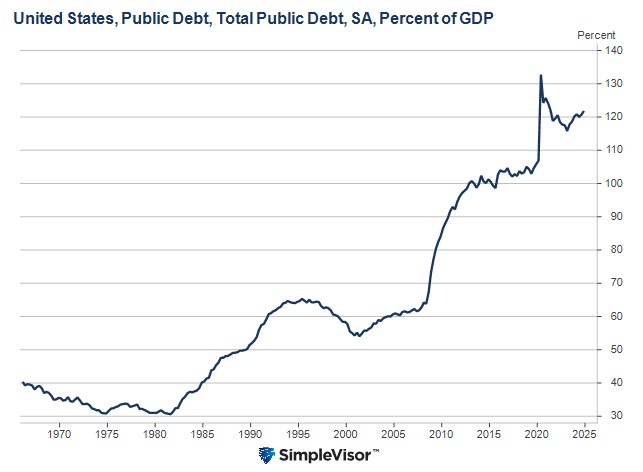
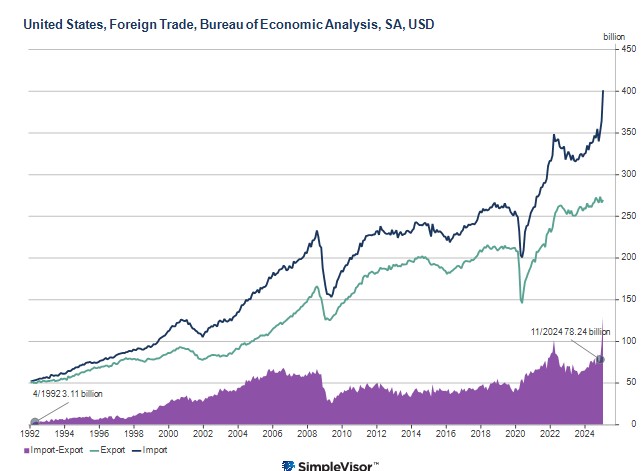
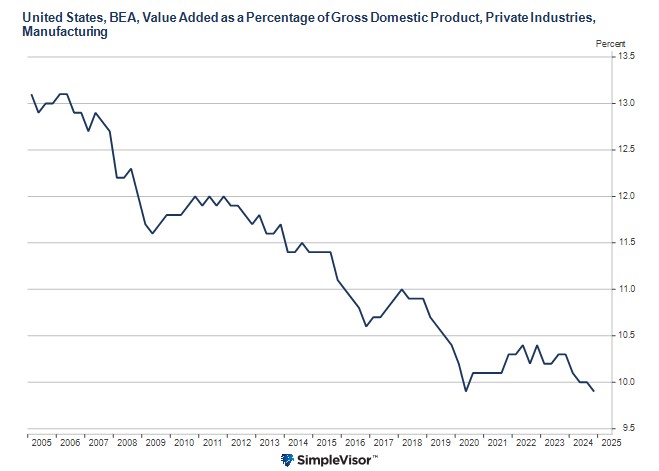
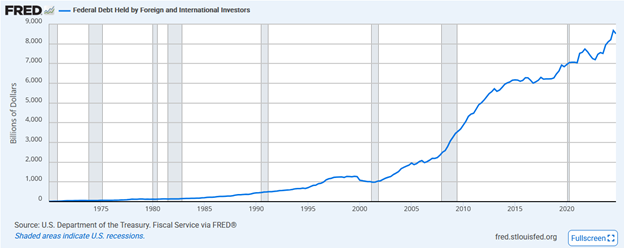
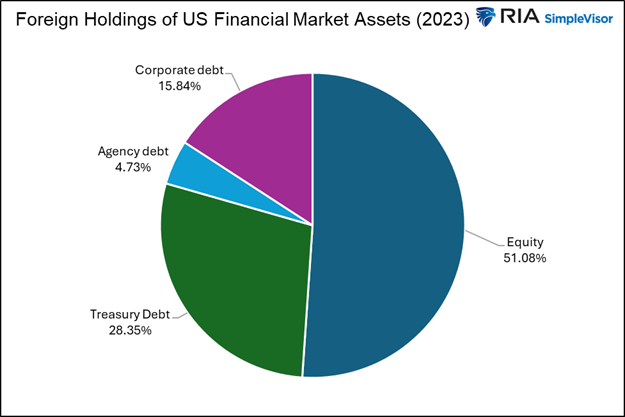
Other Considerations
In exchange for what some deem the “exorbitant privilege” of having the reserve currency and being able to borrow endlessly, the US has an unspoken agreement to provide military protection and arms to our allies. Doing so has further indebted our nation and increased our reliance on foreign funding and, again, low interest rates.
On the plus side, America is not subject to the same magnitude of currency devaluation risk that can wreak havoc on other countries. We do not need to convert dollars into another currency to purchase foreign goods or services. Thus, periods of dollar depreciation have little impact on inflation levels. Moreover, the Federal Reserve sets monetary policy primarily based on economic and financial conditions in America. However, because of the importance of exchange rates and the extensive foreign dollar holdings and international borrowing in dollars, much of the world is subject to US monetary policy, whether it’s appropriate for them or not.
Due to the dollar’s reserve status, America has grown more dominant in the economic and military stages. Further, as shown below, we are wealthier than almost all other nations. While there are many reasons for the nation’s wealth, the dollar’s reserve status is undoubtedly a contributing factor.
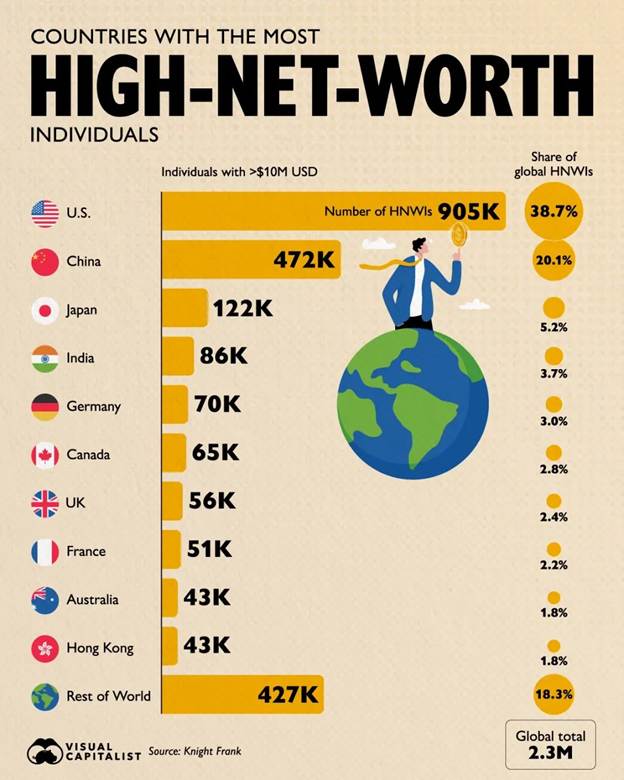
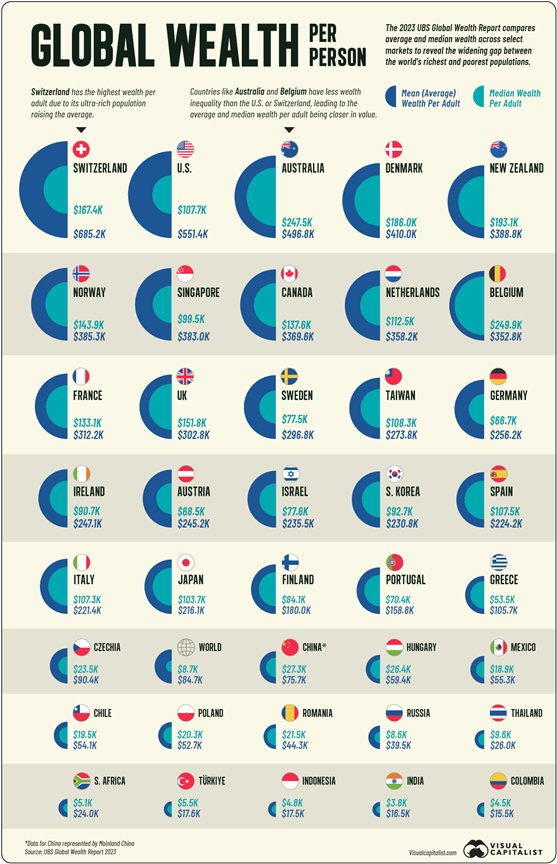
The Blessing – Wealth
The blessing of the dollar reserve status for the US is cheap debt. The result, as we shared above, is enormous wealth. However, our wealth somewhat depends on financial leverage and inflated asset valuations. If foreign investors were to reduce their holdings of US loans and securities, financial asset prices would likely decline, and our wealth would follow.
Or, as we saw in 2008 and 2020, the Federal Reserve would have to step in and provide a liquidity backstop. While the Fed might be able to save yet another day, our increasing dependence on its manipulation of markets offers further evidence of the unsustainable nature of the current economic system.
The Curse – Productivity
Unfortunately, low interest rates have incentivized unproductive debt use. Stock valuations near record highs, meme coins, and excessive real estate prices are just a few of many examples of grossly inflated asset values. Had we used debt toward more productive uses, our economic growth would be more robust. Therefore, our ability to service the debt would be easier. In other words, our federal debt-to-GDP ratio would be below one and declining, not increasing rapidly. Instead, we depend increasingly more on lower interest rates and Fed intervention.
Donald Trump
Donald Trump’s economic messaging in 2018 and 2024 won him the presidency. Reshoring jobs, reducing trade and fiscal deficits, and curtailing our global military footprint rang true with voters.
Whether Trump’s voters realize it or not, his actions seem to argue that America needs to step away from the economic system in place for the last 80 years. Consider some of his recent policies:
- Tariffs to promote domestic manufacturing and reduce imports.
- Eliminating USAID.
- Reducing or limiting our military activity and funding worldwide.
- Aiming to cut the federal deficit via significant spending reductions.
- Suspending America’s role in the World Trade Organization.
- Threatening to end NATO.
Summary
Triffin was correct. The Bretton Woods Agreement and some of its implicit pacts are unsustainable.
If Trump is successful in ending, or at least significantly changing, the current global economic structure, the economy and geopolitics will change dramatically. Initially, this will be highly challenging from an investment perspective.
The dollar will likely remain the world’s reserve currency as no reasonable alternative exists. However, the unspoken agreements and promises surrounding the global economy may change drastically.
We can elect to change on our terms today or have change forced on us tomorrow. The decision isn’t easy as change will involve pain. But, the alternative, not changing, may be much worse. Pick your poison.
